
Course: Elementary Chinese II
Instructor: Chai Jing 柴晶, Senior Language Lecturer, World Languages Program
Students Enrolled: 16
Technology Used: Zoom, NYU Stream Kaltura Capture, NYU Classes, VoiceThread, GoFormative, Flipgrid, Padlet, Quizlet, Kahoot, Google Docs, Google Forms, and more.
After many discussions in late January and early February, the World Languages faculty settled on a mixed model of language teaching which involved recorded videos, live-streaming, and mixed online/offline multi-platform interaction. Tools they are using include Zoom, NYU Stream Kaltura Capture, NYU Classes, VoiceThread, GoFormative, Flipgrid, Padlet, Quizlet, Kahoot, and more.
Chai Jing and her colleagues in the World Languages Program have worked together to produce 65 teaching videos for their students within a week. They are planning to complete nearly 500 videos this semester — an undertaking that would usually take a semester or an entire year to complete. The videos also include interactive quizzes that test students’ progress over time. The content includes real stories, news, and anecdotes from today’s China to link classroom knowledge with real life.
With these tools, students have plenty of online time to interact with classmates and faculty, and can also supplement language practice via text, voice message, or videos in order to hone their listening, speaking, reading, and writing skills. Chai is teaching two classes and meets them four times a week online.
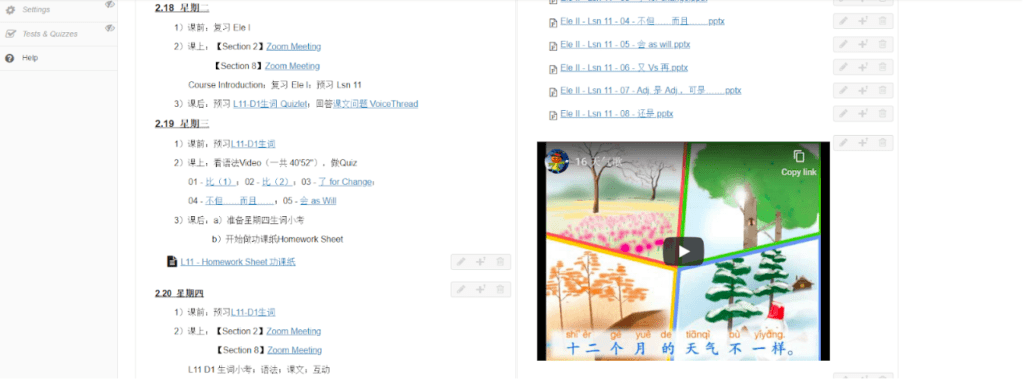
Course syllabus, homework, and media uploaded to NYU Classes
Chai uses NYU Stream Kaltura Capture to upload prerecorded classes. The software captures the instructor’s screen and the instructor herself so students can toggle between the windows to focus on content and feel like an instructor is speaking to him or her. NYU Stream includes an embedded quizzes function that allows for questions to be inserted in between video recordings. These low-stakes quizzes are not graded and act as a way for students to check their own understanding.
For each asynchronous session, Chai developed four to five 10 minute grammar lessons for students to study on their own. She also uses Flipgrid, an online platform where students can record and upload their video responses and engage with the class. Working mostly from her home in Shanghai, Chai uses props, such as stuffed animals and her cat, to record example dialogues for students. Students are then asked to respond by creating videos of their own, using their own props. Chai says she even created a sing-a-long mixtape using clips from her students’ video submissions.
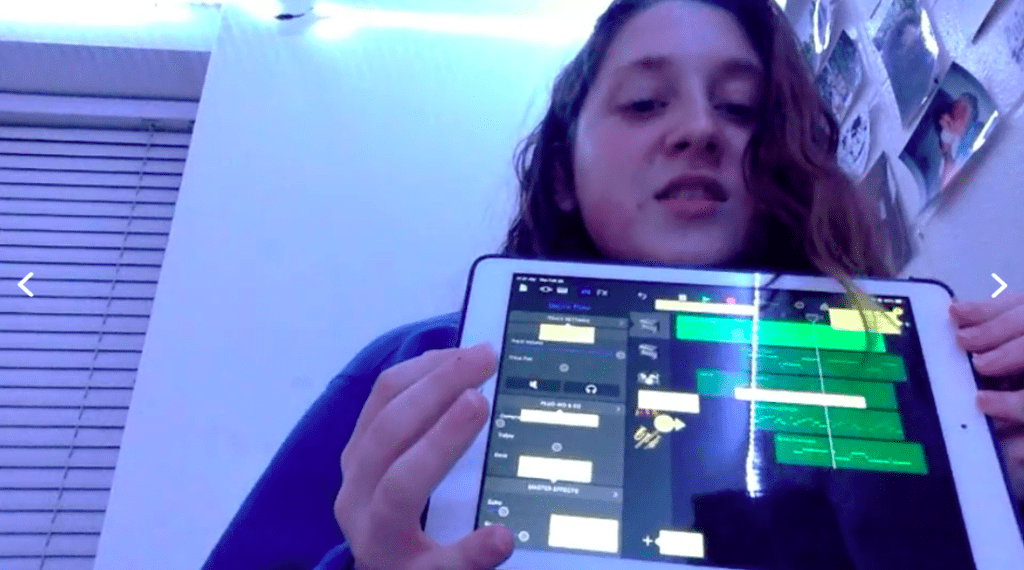
A recording uploaded by student Olivia S. for Chai’s class, where she sings along in Mandarin to a song she composed on popular app music mixing app — GarageBand. Click here to see Chai’s Flipgrid Mixtape, which is comprised of students’ video responses to oral assignments and peer interactions.
Challenges and Lessons Learned
Without an in-classroom setting, sustaining motivation and engagement has been a challenge. Chai says she and her colleagues are constantly looking for ways to not only help students learn and retain the knowledge of their target language but also applying what they’re learning to real life, because the goal of the World Languages Program at NYU Shanghai has always been to teach within the context of the target language.
With an eye towards experimentation, Chai and the World Languages Program have been trying every possible tool to encourage students to practice their listening, speaking, reading and writing skills.
Chai says that GoFormative has been a successful tool in streamlining both asynchronous and synchronous sessions. The screenshots below showcase the real-time interaction function she applies to her teaching.
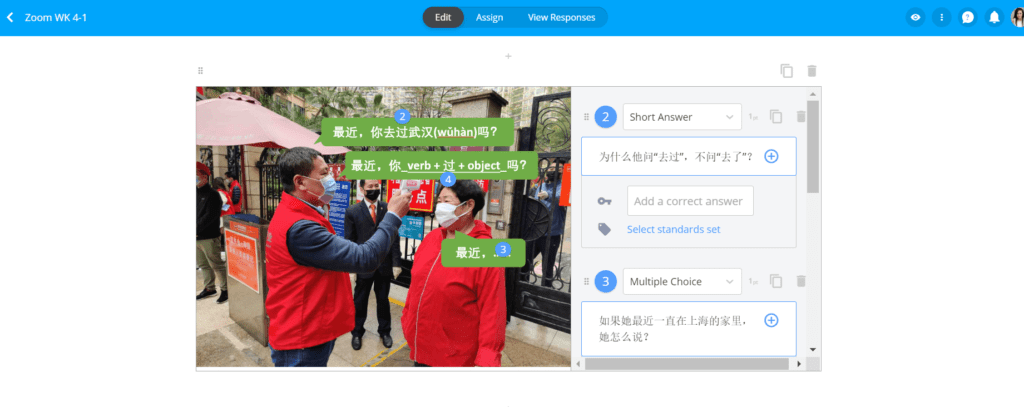
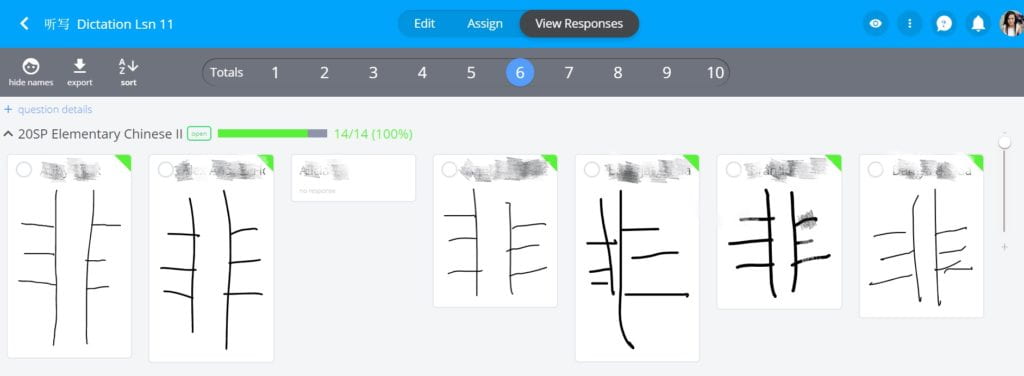
With all this additional experimentation, Chai says that students have found it challenging to navigate a number of new platforms, while also balancing their other online courses.
In an online survey, students reported feeling overwhelmed by having to adapt to new content and a new daily routine, while others said they hoped some of the new online tools could be retained and applied to regular in-classroom learning. They said, for example, that the pre-recorded sessions would be especially helpful in furthering self-learning while maximizing face-to-face interactions with instructors and classmates in the classroom.
Resources
Chai will be using Examity through NYU Classes for online proctoring. Her class has developed their own website called, I Got One, which shares student-developed strategies for memorizing Chinese characters. Chai also incorporates a number of songs and videos into her classes, and a resource she often turns to is called Mandarin HQ — a site that features on-the-street interviews tailored to language learners.
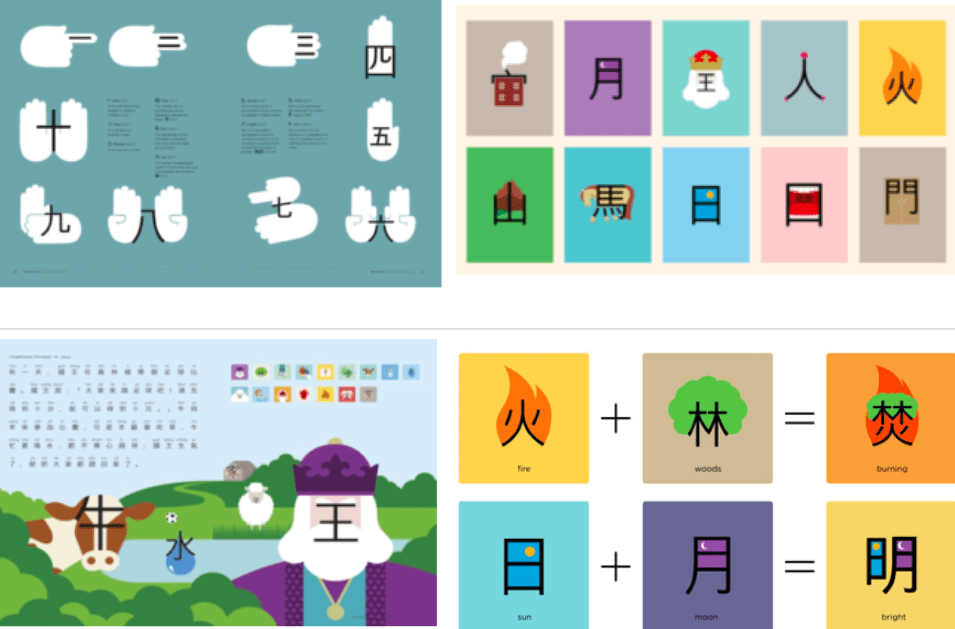
Infographics for memorizing characters shared on Chai’s students’ website — I Got One